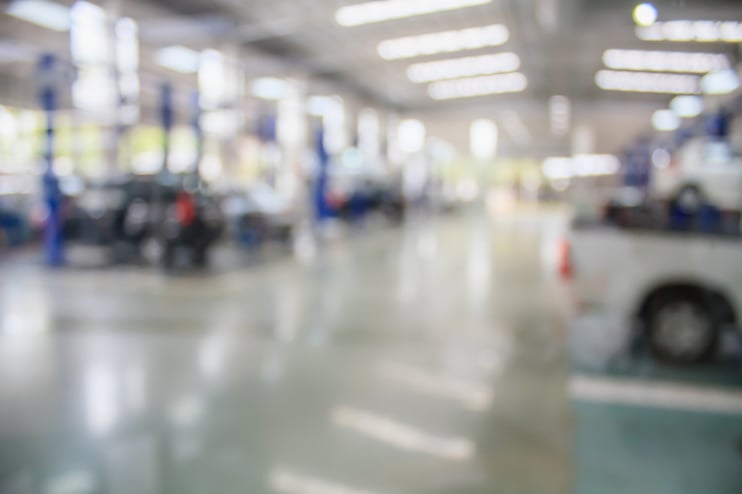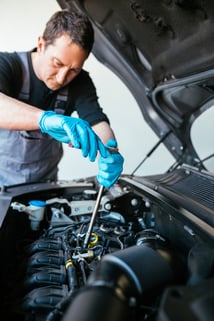 A consumer just found their dream car and believe they got a good deal from one of the local auto dealerships. Isn’t this one of the big things in life? Of course it is.
A consumer just found their dream car and believe they got a good deal from one of the local auto dealerships. Isn’t this one of the big things in life? Of course it is.
Being a savvy shopper, this consumer knows the car depreciated 10 percent the instant they drove it off the car lot and that it will depreciate another 10 percent over the first year of ownership. They may also be aware that studies show it will lose about 10 percent of its value each year over the next four years.
If one does the math, this means that after five years, it is going to be worth about half or even 40 percent of the original sale price. Many people, including me, find this to be a scary statistic.
You may have heard the trope that if a person were to take each $500 monthly car payment made between the age of 30 and 70, and instead invest that money in a mutual fund, they would have a few million dollars. Yikes!
In addition to the monthly payments on a new car, there will be higher registration fees and insurance costs. Registration on a new car costing $36k will be six times as much as a 10-year-old vehicle.
The Good News About Driving Old Cars
Now is probably a good time to announce there is a way to mitigate this loss. For openers, some vehicles do hold their value better than others and will be more popular on the used-car market. It is pretty tricky to predict what those will be in five years. High-mileage vehicles will naturally be worth less, and the general guideline is to only drive a vehicle about 10 thousand miles per year to maximize resale value.
Furthermore, some features on a new car will also enhance its resale value. For instance, a high level of modern safety technology will definitely resonate with certain buyers, particularly moms with small children.
What if one doesn’t want to get a new car every six years, and wants to beat the odds by keeping the car for 10 years? How would this feat be accomplished?
How to Maximize the Resale Value of Old Cars
The good news is that new cars today are built with very high levels of quality. New cars will certainly last longer than the cars from 10 or 20 years ago.
 Consumers can help their cars last longer with one simple commitment — perform all scheduled maintenance as recommended by the manufacturer instead of postponing or ignoring it.
Consumers can help their cars last longer with one simple commitment — perform all scheduled maintenance as recommended by the manufacturer instead of postponing or ignoring it.
A new car will probably have a 3 – 5 year warranty for the drive-train that can be enhanced with an extended warranty. This might seem expensive at first, but could easily pay for itself with just one major malfunction once the factory warranty expires.
Be sure to use all factory recommended fluids and products, and don’t try to cut corners on cheaper products, such as non-synthetic motor oil. Check the automatic transmission fluid frequently, particularly if towing a boat or trailer or driving in a very hot climate.
When buying replacement parts, use factory-quality ones or a remanufactured part if it is from a trusted supplier. Another option is to use a trusted local rebuilder, which is what I do for starters, radiators, transmissions, etc. In my case, I have to do that since some of my cars are from the sixties and seventies and it is hard to get new old stock parts.
At some point, it may make sense to update the car’s stereo/infotainment system to enable technology such as cameras, Bluetooth, AppleCarPlay, and Android Auto.
Updating and Maintaining Tires
Some items on a car will fail over time, but they will evidence a reduced level of performance before they fail. This is true of tires, shock absorbers, headlights and stereo speakers.
Tires are important are to monitor. I remember when new-car tires lasted only 10,000 miles or so, but today we are accustomed to thinking that our tires will last at least 50,000 miles. However, I recently got new tires for my Jaguar XJR and found out that a normal tire wear rating is “one” and my tires are rated “five” — which means that they wear out five times as fast as a “normal” tire.
If driving a vehicle with a high center of gravity (e.g. an SUV or 6,000-pound Suburban), pay very close attention to tire inflation and tire wear. An underinflated tire will heat up more quickly and wear more quickly, so it is best to keep the tires a bit overinflated per the recommended setting on the sidewall.
Remember the infamous Ford Firestone tire controversy, concerning the high incidence of tire failures and accidents of Ford Explorers fitted with Firestone tires. In response, Bridgestone/Firestone recalled 6.5 million tires! Pay attention to factory recalls and newsworthy events like this.
I think it is important to spend a bit more money on tires and get the highest quality that can be afforded. It can be a big shock while you shopping for tires and find that a set of four will cost $1,000, as is the case with my Jaguar and Land Rover. But this is a case where penny wise is definitely pound foolish, particularly when a family’s safety is at stake.
Sourcing Old Car Parts
For collector cars, it helps to keep an eye out for spare parts that might be needed in the future, such as the electric switchgear, light and HVAC switches, power window and lock switches, overhead console assemblies, etc. Over time, it will likely be necessary to rebuild the front and rear suspensions, or replace the motor mounts or wiper motor.
Rust is the only thing that is really terminal. This is not a problem in California. Back east, however, (I went to school in Syracuse) they spray salt on the roads after every snowfall, and they get a lot of snow. Once rust starts, structural rust issues will develop that are impossible to fix, or at least not economical.
Sometimes it can be a badge of honor to take good care of a car, have it look good, and run well 10 years after it was purchased new. Rubber pieces like seals, trim, and weather stripping are always degrading and will fail at some point, and finding replacements will become more difficult. Keep up with single failures as best as possible, but if multiple systems start to fail at once, then it is time to let it go.
How to Pay Auto Repair Centers
Major repairs, particularly replacing components such engines and transmissions, can easily cost a few thousand dollars or more. Statistics show that most people don’t even have an extra thousand dollars in their checking account — let along a few thousand. This is where CrossCheck helps finalize sales for consumers, dealership service centers, or independent repair shops.
CrossCheck’s Multiple Check service allows consumers to pay for expensive repairs without credit lines, credit checks or financing charges. Multiple Check is easy to use.
Consumers write 2 – 4 checks and designate the dates for dealerships or independent garages to deposit them (usually over a 30-day period). This window gives consumers extra time to replenish their checking account and they get to drive their vehicle home on the day the repairs are completed.
Meanwhile, service centers receive guaranteed funding from CrossCheck as each check is deposited.
Multiple Check keeps old cars on the road and simultaneously, helps dealerships or auto shops increase sales and mitigate risk while saving time and money. Download our free guide to learn how it can work for you.
Happy Motoring!


